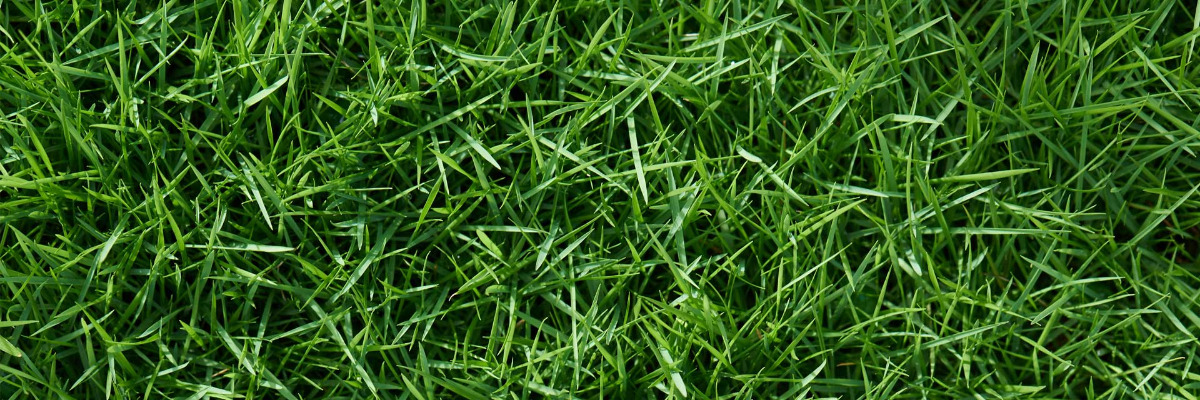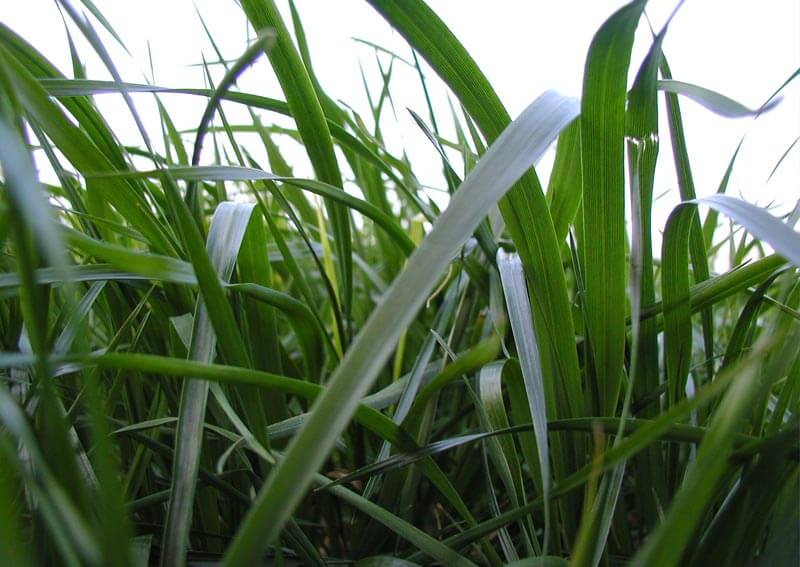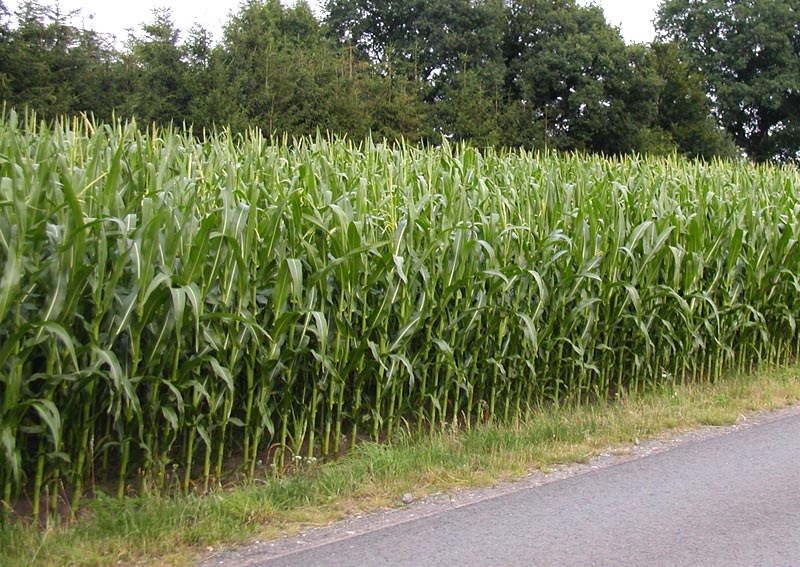Grasses and LegumesGrasses and Legumes
Grasses and Legumes

Grasses and Legumes
When ensiling grass and forage legumes, problems with faulty fermentation as well as reheating or mold growth are to be expected. Which of these problems can occur depends decisively on the degree of wilting of the ensiled material. It is therefore advisable to use the dry matter content as a decision-making aid when selecting the appropriate silage additive.
Silage additive selection
Below 35% TS, SiloFerm based on homofermentative lactic acid bacteria should be used. The natural lactic acid fermentation is promoted and faulty fermentation is avoided. The risk of reheating or mold increases from as little as 35% TS. From this dry matter content, the use of BioCool is advisable. The contained heterofermentative lactic acid bacteria support the ensiling process and specifically form fungus-inhibiting substances such as acetic acid or propanediol.
Silage strategy
In order to deal with the possible risks of green fodder ensiling, the preparation of a called sandwich silage has proven its worth. The lower area (approx. 2/3 to 3/4 of the silo) is treated with Siloferm. This promotes and improves the silage quality. The risk of reheating is significantly higher in the upper area of the silo. A treatment with BioCool is recommended here. However, if the requirements for the minimum advance (1.5 m in winter and 2.5 m in summer) can not be met or if the silo has wilted too much, the entire silo should be treated with BioCool.
Siloferm is a biological additive, which contains specially selected, extra efficient working homofermantative lactic acid bacteria. It can be applied to the silage in liquid or granulated form. The special combination of different lactic acid bacteria controls the run of fermentation effectively and accelerates it. This results in a higher quality of treated silage and a minimization of the fermentation losses. Silages are more palatable, which results in a better feed intake.
Siloferm is DLG-tested group 1b, 4a, 4b, 4c (milk). The improvement of silage quality and animal performance (more milk) has been proven.



The use of Siloferm is recommended with the following forage:
Siloferm
10 g Siloferm per tonne forage
100 g per sachet, enough for 10 tonne ensilage goods or 14 - 17 m³ silo space.
Dissolve one sachet of Siloferm into 20 litres of water stirring continuously and spray on 2 litres/ tonne forage.
Siloferm HC
2,24 g pellets per tonne forage
280 g per bag, enough for 125 tonne ensilage goods or 75 - 80 m³ silo space
Dissolve one sachet in 2,5 litre water and apply 20 ml / ton silage.
Tests have shown that the process of lactic acid fermentation can be influenced positively through the correct use of Siloferm.
Treated silages also demonstrate better digestibility and a higher energy concentration, which, in turn, results in improved animal performance.
Digestibility of the organic substance (%)
| Test | untreated | Siloferm |
| 1 | 70,9 | 73,3 |
| 2 | 71,5 | 72,1 |
| 3 | 72,3 | 73,9 |
| 4 | 76,4 | 79,9 |
33% dry matter
| untreated | Siloferm | |
| pH value | 4,38 | 4,22 |
| lactic acid (% dry matter) | 8,94 | 9,95 |
| acetic acid (% dry matter) | 2,14 | 2,16 |
43% dry matter
| untreated | Siloferm | |
| pH value | 4,51 | 4,29 |
| lactic acid (% dry matter) | 7,44 | 8,37 |
| acetic acid (% dry matter) | 1,63 | 0,99 |
54% dry matter
| untreated | Siloferm | |
| pH value | 4,77 | 4,38 |
| lactic acid (% dry matter) | 4,76 | 6,91 |
| acetic acid (% dry matter) | 0,98 | 0,59 |
Careful examination has shown that our product, when used according to the directions for use, is suited for the recommended purposes. If biological silage additives are used, then the ensilage and removal technique has to be very good. Plant cultivation errors (e.g. cutting too late) and ensilage technique errors (e.g. compression and covering) cannot be compensated. We are liable for the consistent quality of the product, not for the risks of storage and use.
BioCool is a biological additive, which contains the specially selected, extra efficient working heterofermentative lactic acid bacteria Lactobacillus buchneri and enzymes Lactobacillus bucheri supports the natural lactic acid fermentation and simultaneously improves the aerobic stability of silages during feeding out of the clamp. Additional to lactic acid is Lactobacillus buchneri able to produce a few mould inhibitory substances. Well know are acetic acid and propylene glycole. Spoilage of silage, caused by yeasts and moulds are effectively inhibited.
BioCool is DLG-tested in group 2. The improvement of aerobic stability has been proven. It has been proved that the silage durability improves when exposed to the air.



The use of BioCool is recommended with the following forage (amongst others):
BioCool
BioCool HC
Depending on dispensing possibilities, the concentration of the solution can vary.
Experiments have shown that the addition of BioCool improves aerobic durability. The treated silages were strained significantly less by yeasts. A heating up could not be observed.
Careful examination has shown that our product, when used according to the directions for use, is suited for the recommended purposes. If biological silage additives are used, then the ensilage and removal technique has to be very good. Plant cultivation errors (e.g. cutting too late) and ensilage technique errors (e.g. compression and covering) cannot be compensated. We are liable for the consistent quality of the product, not for the risks of storage and use.